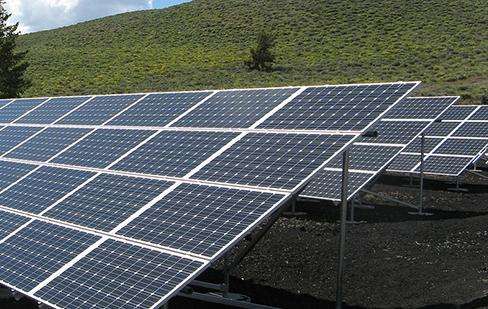1. Wind power
Wind is a new energy source with great potential. At the beginning of the 18th century, a violent wind swept across Britain and France, destroying 400 wind mills. , 800 houses, 100 churches, more than 400 sailing boats, thousands of people were injured, and 250,000 large trees were uprooted.
Just talking about pulling up a tree, the wind generates a power of 10 million horsepower (ie 7.5 million kilowatts; one horsepower is equal to 0.75 kilowatts) in a few seconds! Some people have estimated that on the earth, The wind power resources that can be used to generate electricity are about 10 billion kilowatts, which is almost 10 times the current hydropower generation capacity in the world.
Currently, the energy obtained from burning coal in the world each year is only one-third of the energy provided by wind in a year. Therefore, domestic and foreign governments attach great importance to the use of wind power to generate electricity and develop new energy sources.
2. Spreading seeds
Wind is one of the environmental factors in agricultural production. Moderate wind speed plays an important role in improving farmland environmental conditions. Near-surface heat exchange, farmland evapotranspiration, and transport processes of carbon dioxide and oxygen in the air accelerate or intensify as wind speed increases. Wind can spread plant pollen and seeds, helping plants to pollinate and reproduce.
Wind energy is a widely distributed and inexhaustible energy source. The prevailing monsoon in China is beneficial to crop growth. In the Inner Mongolia Plateau, Northeast Plateau, Southeast Coast and inland mountains, there are abundant wind energy resources that can be developed and utilized as energy.
3. Information indicators
Wind data is one of the important meteorological data, both in theoretical research and in various sectors of national economic construction, such as agriculture, transportation, and construction. Industry, water conservancy projects, recuperation and other departments are all indispensable. Wind is the horizontal movement of air and is a vector (or vector) represented by direction (wind direction) and speed (wind speed).
Wind direction refers to the direction from which the wind comes. Except for calm wind, it is expressed in 16 directions. Wind speed refers to the ratio of the distance traveled by the air to the time required to travel the distance. The unit is expressed in meters per second. It is observed regularly (the basic station observes 4 times a day and the base station observes 24 times a day). Take an integer and record it by yourself. Record to one decimal place.
Extended information:
The economic value of wind power
The cost of generating electricity from the wind has dropped so much that, even without other external costs, wind power is now less expensive than fuel-fired internal combustion engines in many suitable locations.
The annual growth rate of wind power generation was about 25% in 2002, and now it is growing rapidly at a rate of 38%. In 2003, the growth of wind power in the United States exceeded the average growth rate of all generators.
Since 2004, wind power has become the cheapest of all new energy sources. In 2005 the cost of wind energy fell to one-fifth of what it was in the 1990s, and with the use of high-wattage generators, the cost ofThe downward trend will continue.
Baidu Encyclopedia - Wind
Baidu Encyclopedia - Wind Power














